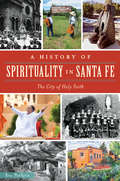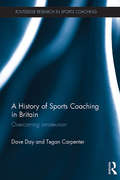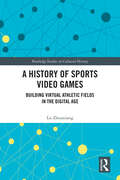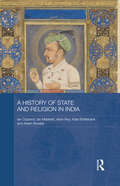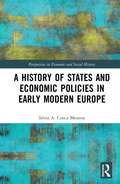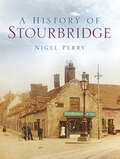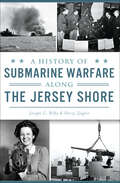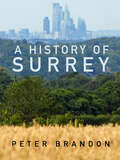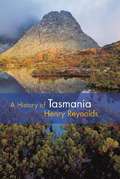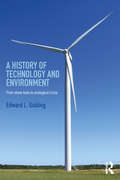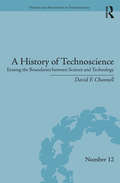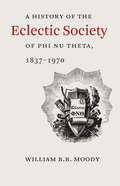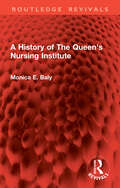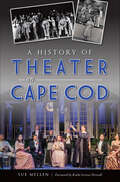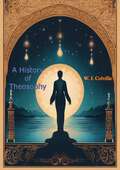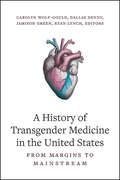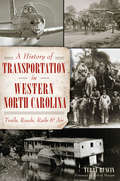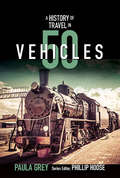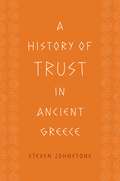- Table View
- List View
A History of Spirituality in Santa Fe: The City of Holy Faith
by Ana PachecoShaped by early volcanic activity, the Sangre De Cristo and Jemez Mountain ranges surrounding Santa Fe create a uniquely spiritual landscape. Centuries ago, the Anasazi and their Pueblo Indian descendants believed the land was sacred and established communities in the area. In the early seventeenth century, the Spanish brought Catholicism to Santa Fe and christened it the City of Holy Faith. Other European faiths arrived in the mid-nineteenth century. By the twentieth century, religions from the East, along with New Thought and New Age practitioners, had established a foothold in the capital city. Sikhism, the fifth-largest religion in the world, was introduced to the western hemisphere from Santa Fe. The nature-based UDV religion of Brazil founded its first center in the United States in Santa Fe, which also includes the four major lineages of Tibetan Buddhism. Santa Fe city historian Ana Pacheco documents the rich religious and spiritual history of this high-mountain metaphysical community.
A History of Sports Coaching in Britain: Overcoming Amateurism (Routledge Research in Sports Coaching)
by Dave Day Tegan CarpenterAt the London Olympics in 2012 Team GB achieved a third place finish in the medals table. A key factor in this achievement was the high standard of contemporary British sports coaching. But how has British sports coaching transitioned from the amateur to the professional, and what can the hitherto under-explored history of sports coaching in Britain tell us about both the early history of sport and about contemporary coaching practice? A History of Sports Coaching in Britain is the first book to attempt to examine the history of British sports coaching, from its amateur roots in the deep nineteenth century to the high performance, high status professional coaching cultures of today. The book draws on original primary source material, including the lost coaching lives of key individuals in British coaching, to trace the development of coaching in Britain. It assesses the continuing impact of the nineteenth-century amateur ethos throughout the twentieth century, and includes important comparisons with developments in international coaching, particularly in North America and the Eastern Bloc. The book also explores the politicisation of sport and the complicated interplay between politics and coaching practice, and illuminates the origins of the structures, organisations and philosophies that surround performance sport in Britain today. This book is fascinating reading for anybody with an interest in the history of sport, sports coaching, sports development, or the relationships between sport and wider society.
A History of Sports Video Games: Building Virtual Athletic Fields in the Digital Age (Routledge Studies in Cultural History)
by Lu ZhouxiangThis book explores the history of sports and sports-themed video games, providing a comprehensive and holistic view of this complex and diverse genre.The author highlights the influence of technological advancement, industry competition and popular culture on game design, marketing strategies and user experience. Offering valuable insights into the historical process of interaction and integration between real-world sport and video games, this volume will enrich existing scholarship on video games.This volume is a valuable contribution to the fields of both game studies and sports studies, and will be perfect for those interested in the history of science and technology as well as social and cultural history.
A History of State and Religion in India (Routledge Studies in South Asian History)
by Asim Roy Ian Copland Ian Mabbett Kate Brittlebank Adam BowlesOffering the first long-duration analysis of the relationship between the state and religion in South Asia, this book looks at the nature and origins of Indian secularism. It interrogates the proposition that communalism in India is wholly a product of colonial policy and modernisation, questions whether the Indian state has generally been a benign, or disruptive, influence on public religious life, and evaluates the claim that the region has spawned a culture of practical toleration. The book is structured around six key arenas of interaction between state and religion: cow worship and sacrifice, control of temples and shrines, religious festivals and processions, proselytising and conversion, communal riots, and religious teaching/doctrine and family law. It offers a challenging argument about the role of the state in religious life in a historical continuum, and identifies points of similarity and contrast between periods and regimes. The book makes a significant contribution to the literature on South Asian History and Religion.
A History of States and Economic Policies in Early Modern Europe (Perspectives in Economic and Social History)
by Silvia A. Conca MessinaWhy was early modern Europe the starting point of the economic expansion which led to the Industrial Revolution? What was the state’s role in this momentous transformation? A History of States and Economic Policies in Early Modern Europe takes a comparative approach to answer these questions, demonstrating that wars, public finance and state intervention in the economy were the key elements underlying European economic dynamics of the era. Structured in two parts, the book begins by examining the central issues of the state–economy relationship, including military revolution, the fiscal state and public finance, mercantilism, the formation of commercial empires and the economic war between Britain and France in the 1700s. The second part presents a detailed comparison between the different economic policies of the most important European states, looking at their unique demographic, economic, military and institutional contexts. Taken as a whole, this work provides a valuable analysis of early modern economic history and a picture of Europe’s global position on the eve of the Industrial Revolution. This book will be useful to students and researchers of economic history, early modern history and European history.
A History of Stepfamilies in Early America
by Lisa WilsonStepfamilies are not a modern phenomenon, but despite this reality, the history of stepfamilies in America has yet to be fully explored. In the first book-length work on the topic, Lisa Wilson examines the stereotypes and actualities of colonial stepfamilies and reveals them to be important factors in early United States domestic history. Remarriage was a necessity in this era, when war and disease took a heavy toll, all too often leading to domestic stress, and cultural views of stepfamilies during this time placed great strain on stepmothers and stepfathers. Both were seen either as unfit substitutes or as potentially unstable influences, and nowhere were these concerns stronger than in white middle-class families, for whom stepparents presented a paradox.Wilson shares the stories of real stepfamilies in early New England, investigating the relationship between prejudice and lived experience, and, in the end, offers a new way of looking at family units throughout history and the cultural stereotypes that still affect stepfamilies today.
A History of Stourbridge
by Nigel PerryStourbridge came into existence in the early Middle Ages. It has seen much development from Roman and Saxon times and during the reigns of Elizabeth and Victoria. More changes followed in the 20th century; though an agricultural market town it is also renown for its glass-making.
A History of Sub-Saharan Africa
by Robert O. Collins James M. BurnsIn a trawl through the entire sweep of sub-Saharan history, the authors have written an accessible introduction for students and general readers. The opening chapter on geography and climate frames the discussion, demonstrating how the environment has shaped the societies and cultures of those living in the region. Thereafter they describe the rise of states and empires in the classical period, the slave trade within Africa and beyond to the Americas, and the European conquest. The concluding section focuses on Africa in the twentieth century as it gains independence and searches for a new identity beyond colonialism. While the authors mull over the debates which have shaped the study of African history, at the center of this story are the tragedies, triumphs and the resilience of the African people. The book is illustrated with photographs, maps, and sidebars which feature the salient points on either side of the debates.
A History of Submarine Warfare Along the Jersey Shore (Military)
by Harry Ziegler Joseph G. BillyThe ingenious people of the Garden State were instrumental in the early development of the submarine. The first American submarine sank off Fort Lee in 1776, and the first successful one adopted by the U.S. Navy was invented by Paterson's John Holland at the end of the nineteenth century. Those early vessels were tested in the Passaic River and on the Jersey City waterfront. Today, the only surviving Union Civil War submarine, built in Newark, sits in the National Guard Militia Museum in Sea Girt. In 1918, the technology pioneered there was turned against the Jersey Shore when U-151 went on a one-day ship-sinking rampage. A World War II U-boat offensive torpedoed numerous ships off the coast, leaving oil-soaked beaches strewn with wreckage. Authors Joseph G. Bilby and Harry Ziegler reveal the remarkable history of submarines off the New Jersey coastline.
A History of Surgery: Third Edition
by Harold Ellis Sala AbdallaWritten in a personal and engaging style, by a medical author and teacher of great renown, this book provides a fascinating and informative introduction to the development of surgery through the ages. It describes the key advances in surgery through the ages, from primitive techniques such as trepanning, some of the gruesome but occasionally successful methods employed by the ancient civilisations, the increasingly sophisticated techniques of the Greeks and Romans, the advances of the Dark Ages and the Renaissance and on to the early pioneers of anaesthesia and antisepsis such as Morton, Lister and Pasteur. Fully illustrated in colour, Ellis's History of Surgery is the only serious choice for a reader wanting a lively and informative single-volume introduction to surgical history.
A History of Surrey
by Peter BrandonSurrey reveals an indomitable character, in its life and scenery, which has survived the relentless advance of London.There is much in the history of Surrey of significance in the wider history of England, indeed of Europe. The county affords good examples of prosperous peasant life at the woodland margin in the Middle Ages, and had some of the best developed industry before the Industrial Revolution. One of the first places in which men cultivated a sense of natural beauty and escaped from the turmoil of the city into the peace of the countryside, the landscape gardening which has made Surrey unrivalled in its beautifully contrived scenery is a major contribution to the arts of Western Europe. However, the author gives due prominence to the contribution of generation of ordinary Surrey folk who, as they lived their quiet, virtually unknown lives, stamped their personality on the county.Dr Brandon’s first edition of this book, in 1977, was widely praised for its original and perceptive analysis of the tension between the ancient rural country and its burgeoning and intrusive neighbour, the metropolis. Updated in this new paperback edition, A History of Surrey remains a taut yet comprehensive text that will appeal to those in both urban and rural parts of ancient Surrey.
A History of Tasmania
by Henry ReynoldsThis captivating work charts the history of Tasmania from the arrival of European maritime expeditions in the late eighteenth century, through to the modern day. By presenting the perspectives of both Indigenous Tasmanians and British settlers, author Henry Reynolds provides an original and engaging exploration of these first fraught encounters. Utilising key themes to bind his narrative, Reynolds explores how geography created a unique economic and migratory history for Tasmania, quite separate from the mainland experience. He offers an astute analysis of the island's economic and demographic reality, by noting that this facilitated the survival of a rich heritage of colonial architecture unique in Australia, and allowed the resident population to foster a powerful web of kinship. Reynolds' remarkable capacity to empathise with the characters of his chronicle makes this a powerful, engaging and moving account of Tasmania's unique position within Australian history.
A History of Technology and Environment: From stone tools to ecological crisis
by Edward L. GoldingThis book provides an accessible overview of the ways that key areas of technology have impacted global ecosystems and natural communities. It offers a new way of thinking about the overall origins of environmental problems. Combining approaches drawn from environmental biology and the history of science and technology, it describes the motivations behind many technical advances and the settings in which they occurred, before tracing their ultimate environmental impacts. Four broad areas of human activity are described: over-harvesting of natural resources using the examples of hunting, fishing and freshwater use; farming, population, land use, and migration; discovery, synthesis and use of manufactured chemicals; and development of sources of artificial energy and the widespread pollution caused by power generation and energy use. These innovations have been driven by various forces, but in most cases new technologies have emerged out of fascinating, psychologically rich, human experiences. This book provides an introduction to these complex developments and will be essential reading for students of science, technology and society, environmental history, and the history of science and technology.
A History of Technoscience: Erasing the Boundaries between Science and Technology (History and Philosophy of Technoscience)
by David F. ChannellAre science and technology independent of one another? Is technology dependent upon science, and if so, how is it dependent? Is science dependent upon technology, and if so how is it dependent? Or, are science and technology becoming so interdependent that the line dividing them has become totally erased? This book charts the history of technoscience from the late nineteenth century to the end of the twentieth century and shows how the military–industrial–academic complex and big science combined to create new examples of technoscience in such areas as the nuclear arms race, the space race, the digital age, and the new worlds of nanotechnology and biotechnology.
A History of Thailand
by Chris Baker Pasuk PhongpaichitIn A History of Thailand, Chris Baker and Pasuk Phongpaichit reveal how a world of mandarin nobles and unfree labour evolved into a rural society of smallholder peasants and an urban society populated mainly by migrants from southern China. They trace how a Buddhist cosmography adapted to new ideas of time and space, and a traditional polity was transformed into a new nation-state under a strengthened monarchy. The authors cover the contests between urban nationalists, ambitious generals, communist rebels, business politicians, and social movements to control the nation-state and redefine its purpose. They describe the dramatic changes wrought by a booming economy, globalization, and the evolution of mass society. Finally, they show how Thailand's path is still being contested by those who believe in change from above and those who fight for democracy and liberal values. Drawing on new Thai-language research, this second edition brings the Thai story up to date and includes a new section on the 2006 coup and the restoration of an elected government in 2008.
A History of Thailand
by Chris Baker Pasuk PhongpaichitIn A History of Thailand, Chris Baker and Pasuk Phongpaichit reveal how a world of mandarin nobles and unfree labour evolved into a rural society of smallholder peasants and an urban society populated mainly by migrants from southern China. They trace how a Buddhist cosmography adapted to new ideas of time and space, and a traditional polity was transformed into a new nation-state under a strengthened monarchy. The authors cover the contests between urban nationalists, ambitious generals, communist rebels, business politicians, and social movements to control the nation-state and redefine its purpose. They describe the dramatic changes wrought by a booming economy, globalization, and the evolution of mass society. Finally, they show how Thailand's path is still being contested by those who believe in change from above and those who fight for democracy and liberal values. Drawing on new Thai-language research, this second edition brings the Thai story up to date and includes a new section on the 2006 coup and the restoration of an elected government in 2008.
A History of The Eclectic Society of Phi Nu Theta, 1837-1970
by William B. B. MoodyThe definitive record of the history, lore, and lost secrets of the Eclectic Society at Wesleyan University from its inception in 1837 through a great period of upheaval in the 1960s. The Society was founded in 1837 at Wesleyan, making it one of the oldest college fraternal organizations in the United States.
A History of The Queen's Nursing Institute (Routledge Revivals)
by Monica E. BalyOriginally published in 1987, reissued here with a new preface, this book presented a history of the Queen’s Nursing Institute on the occasion of the centenary of its founding in 1887. Since that time, the Institute had been the major force behind all developments in the field of district nursing. Monica Baly here traces the history of the Institute concentrating not just on top personalities, but on showing what district nurses actually did and on relating developments to the social, political and cultural events and attitudes of the day. Breaking much new ground, the book should be essential reading for all district nurses in particular, and for other nurses and historians with an interest in the history of nursing. Still going strong today, now The Queen’s Institute of Community Nursing is a registered charity dedicated to improving the nursing care of people in the home and community.
A History of Theater on Cape Cod
by Sue MellenTheater on the Cape began in 1916 when a group of artists and writers in Provincetown mounted a production of a one-act play, Bound East for Cardiff, by a little-known playwright, Eugene O'Neill. They staged the play in a rickety old theater on a wharf in what was then little more than a sleepy fishing village. From that artists' colony--and others like it across the Cape and Islands--it grew into the constantly expanding theater universe it is today. The theatrical descendants of O'Neill and the Provincetown Players continue to present classical drama, contemporary hits and new, experimental works to audiences that have come to expect the best. In her tour of the theaters from Provincetown to Falmouth, author and entertainment columnist Sue Mellen reveals the rich past behind a unique cultural treasure.
A History of Theosophy
by W. J. ColvilleA History of Theosophy by W. J. Colville is a comprehensive account of the development and evolution of theosophical thought and practice. Theosophy is a philosophical and spiritual movement that emerged in the late 19th century, drawing on a range of religious and philosophical traditions from around the world. Colville traces the origins of theosophy back to ancient wisdom traditions, and explores its key figures and ideas, including Helena Blavatsky, Annie Besant, and Krishnamurti. He also examines the impact of theosophy on literature, art, and culture, and its role in shaping modern spirituality. This book provides a detailed and engaging overview of one of the most influential spiritual movements of the modern era.-Print ed.
A History of Transgender Medicine in the United States: From Margins to Mainstream
by Carolyn Wolf-Gould; Dallas Denny; Jamison Green; Kyan LynchThe most comprehensive history of transgender medicine to date, as told by more than forty scholars, physicians, psychologists, and activists from trans, gender-diverse, and allied medical communities.Arriving at a critical moment in the struggle for transgender rights, A History of Transgender Medicine in the United States takes an empathic approach to an embattled subject. Sweeping in scope and deeply personal in nature, this groundbreaking volume traces the development of transgender medicine across three centuries-centering the voices of transgender individuals, debunking myths about gender-affirming care, and empowering readers to grasp the complexities of this evolving field. More than forty contributors-including patients, advocates, physicians, psychologists, and scholars-weave an illuminating, sometimes surprising narrative of collaboration and conflict between trans people and the scientists who have studied and worked with them. An indispensable guide to understanding the current tumult surrounding trans health-care access in the United States, the volume underscores a crucial message: gender diversity is not a new phenomenon but an integral part of our shared human history.
A History of Transportation in Western North Carolina: Trails, Roads, Rails & Air (Transportation)
by Robert Morgan Terry RuscinTraveling across the treacherous and diverse landscape of western North Carolina is a challenge historically met with human ingenuity. Mountain traces of Native Americans, dusty stagecoach routes and vital railroads lined the region. Asheville installed the state's first electric streetcars. Intrepid young men and women continued North Carolina's aviation legacy. The Buncombe Turnpike helped tame the Blue Ridge Mountains, allowing livestock drives to reach markets in South Carolina. Author Terry Ruscin reveals the visionaries and risk-takers who paved the way to the "Land of the Sky" in a wondrous examination of western North Carolina transportation history.
A History of Travel in 50 Vehicles (History in #50)
by Phillip Hoose Paula GreyPaula Grey explores how creative thinkers--collaborating or competing and always building on the work of their predecessors--have envisioned new ways to move about in the world. The story of travel is the human story. From the first migrations out of Africa on weary feet to horses, camels, rafts, chariots, steamships, trains, hot air balloons, cars, submarines, and moon rockets, humans have combined imagination, daring, and technical brilliance to create new vehicles and improve existing ones. Geography and culture have influenced the development of vehicles in far-flung parts of the world, and human travel has, in turn, exerted a profound influence on society and the environment. Whether escaping deprivation, pestilence, persecution, oppression, or fear--or seeking abundance, freedom, fame, fortune, or a fresh start--we have always been a traveling species, and it seems we always will be. Here is the story of humankind's restless impulse to see what's over the next ridge, beyond the next sunrise, on the next planet. Enjoy the journey!
A History of Trust in Ancient Greece
by Steven JohnstoneAn enormous amount of literature exists on Greek law, economics, and political philosophy. Yet no one has written a history of trust, one of the most fundamental aspects of social and economic interaction in the ancient world. In this fresh look at antiquity, Steven Johnstone explores the way democracy and markets flourished in ancient Greece not so much through personal relationships as through trust in abstract systems--including money, standardized measurement, rhetoric, and haggling. Focusing on markets and democratic politics, Johnstone draws on speeches given in Athenian courts, histories of Athenian democracy, comic writings, and laws inscribed on stone to examine how these systems worked. He analyzes their potentials and limitations and how the Greeks understood and critiqued them. In providing the first comprehensive account of these pervasive and crucial systems, A History of Trust in Ancient Greece links Greek political, economic, social, and intellectual history in new ways and challenges contemporary analyses of trust and civil society.
A History of Trust in Ancient Greece
by Steven JohnstoneAn enormous amount of literature exists on Greek law, economics, and political philosophy. Yet no one has written a history of trust, one of the most fundamental aspects of social and economic interaction in the ancient world. In this fresh look at antiquity, Steven Johnstone explores the way democracy and markets flourished in ancient Greece not so much through personal relationships as through trust in abstract systems—including money, standardized measurement, rhetoric, and haggling.Focusing on markets and democratic politics, Johnstone draws on speeches given in Athenian courts, histories of Athenian democracy, comic writings, and laws inscribed on stone to examine how these systems worked. He analyzes their potentials and limitations and how the Greeks understood and critiqued them. In providing the first comprehensive account of these pervasive and crucial systems, A History of Trust in Ancient Greece links Greek political, economic, social, and intellectual history in new ways and challenges contemporary analyses of trust and civil society.
